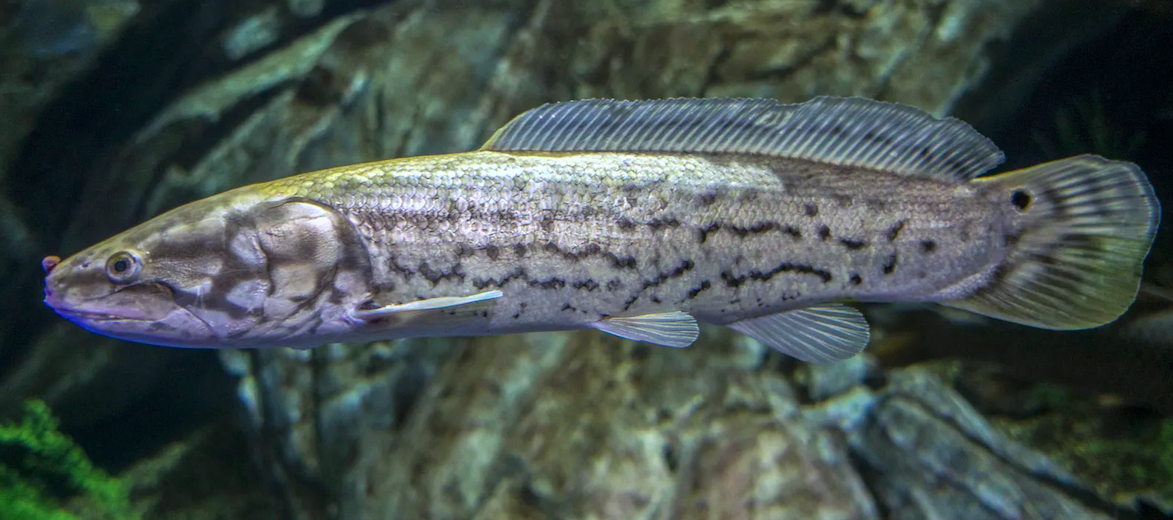
The bowfin, aka choupique, dogfish, grindle, grinnel, mudfish, mud pike, and swamp trout, hails from the freshwater rivers, lakes, streams, and swamps of eastern United States, Ontario, and Quebec. Being 1 of only 2 surviving species of the Halecomorphi (a group of fish that first appeared during the Early Triassic, around 250 million years ago), these fish are considered a relict. Due to their stable and abundant numbers, they are listed as Least Concern by the IUCN.
First the Stats…
Scientific name: Amia calva
Weight: Up to 19 lbs.
Length: Up to 27 inches
Lifespan: Up to 33 years
Now on to the Facts!
1.) Bowfins are termed a primitive fish due to the presence of a gular plate (bony structure on the ventral sides of the mouth); a rounded tail; and a vascularized air-bladder. Most modern fish lack 1 or more of these characteristics.
2.) Fossil records show that these fish used to inhabit both freshwater, brackish, and saltwater environments in North America, South America, Europe, Asia, and Africa.
3.) They prefer vegetated sloughs, lakes, swamps, lowland rivers, and backwater areas; they are also even found in brackish water environments.
4.) The bowfin is nocturnal (active at night).
5.) These ambush predators prey on crayfish, mollusks, smaller fish, amphibians, snakes, and aquatic insects.
But wait, there’s more on the bowfin!
6.) In water conditions known as aquatic hypoxia (low oxygen levels) where other fish would suffocate, these fish can simply gulp air and get oxygen that way, rather than via the water only.
7.) During the mating season, the males take on turquoise colored lips, belly, and throat.
Did you know…?
Just like gars, bowfins are bimodal breathers (have the capacity to breathe both water and air). Their gills exchange gases in the water allowing them to breathe, but they also have a gas bladder that helps to maintain buoyancy, & also allows them to breathe air via a small pneumatic duct connected from the foregut to the gas bladder.
8.) Males build circular nests in the weedy areas and guard the fertilized eggs.
9.) The mating dance consists of chasing, nose biting, and nudging the female until she becomes receptive to mating.
10.) Females lay up to 5,000 eggs that hatch in up to 10 days.
But wait, there’s still more on the bowfin!
11.) Once hatched, the fry will attach themselves to the surrounding aquatic plants.
12.) As soon as they reach approximately .5 inch, they will begin to depart and they will begin life on their own, when they reach 4 inches.
Did you know…?
These fish can survive long periods of drought and exposure to air, as long as they can remain moist, since they can breathe air.
13.) Bowfins are preyed on by larger fish, alligators, and anglers.
14.) Being bimodal breathers comes in handy when they follow the receding waters and end up getting trapped without any water. They simply burrow into the mud and breathe air till the water returns.
15.) These fish are the last remaining members of Halecomorphi, a group that includes several extinct species in numerous families.
Now a Short Bowfin Video!
Be sure to share & comment below! Also, check out the Critter Science YouTube channel. Videos added regularly!
Want to suggest a critter for me to write about? Let me know here.



